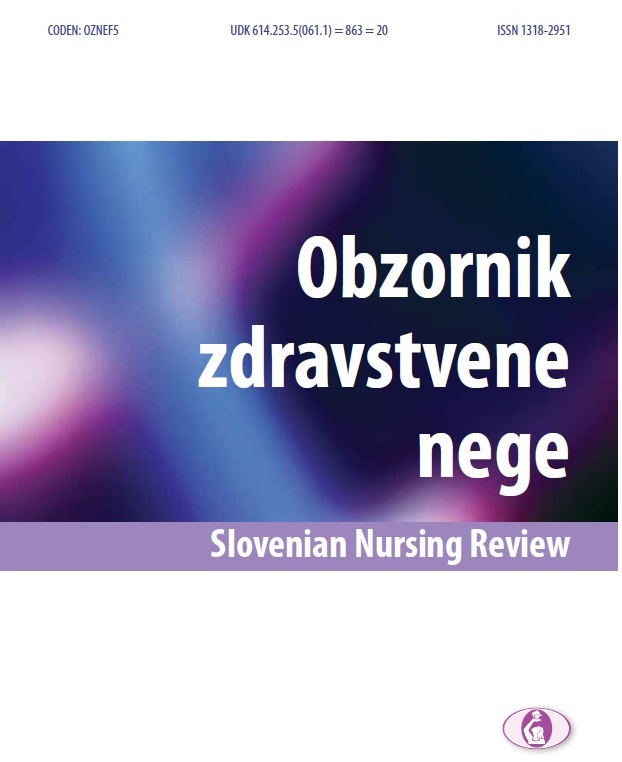Information system prototype design of the clinical pathway of mothers and newborns in the postpartum and postnatal period
DOI:
https://doi.org/10.14528/snr.2021.55.2.2975Keywords:
health education, nursing, documentation, quality, treatmentAbstract
Introduction: Clinical pathway is a methodology that enables all members of a healthcare team to practise rational and well-considered treatment that is based on good practice, as well as monitoring of the work and simplified documentation. The aim of this study was to identify the clinical pathway for an effective treatment of mothers in neonatal period and develop a prototype of the information system that would facilitate the implementation of this path.
Methods: A literature review identified an existing clinical pathway. A prototype of the information system was designed using a modeling method and structured interviews with 6 focus group participants. The prototype was evaluated by identifying patterns and key topics from the clinical settings.
Results: Judgement criteria of focus group participants for prototype evaluation indicate that the information system prototype can adequately support the presented clinical pathway. Improvements made by focus group participants were subsequently incorporated into the developed prototype.
Discussion and conclusion: Nurses represent an important connection in treatments within the clinical pathway system in the early postnatal period. By introducing treatment of the clinical pathway system, which is supported by the proposed information system, the method of documenting treatments in the implementation of the clinical pathway can be significantly improved. By reducing unnecessary double recording, nurses would gain time and use it more efficiently.
Downloads
Metrics
References
Bick, D., Malone, J., & Fontenla, M. (2009). A case study evaluation of implementation of a care pathway to support normal birth on English birth centre: Anticipated benefits and unintended consequences. Pregnancy and Childbirth, 9(47), 2−12. https://doi.org/10.1186/1471-2393-9-47 PMid:19804624 PMCid:PMC2761848
Gan, B., Mao, J., & Huang, W. (2013). Application of clinical pathway in vaginal delivery due to full-term premature rupture of fetal membranes. Journal of Cardiovascular Magnetic Resonance, 9(1), 365−368. https://doi.org/10.3109/23256176.2013.856103
Hunter, B., & Segrott, J. (2010). Using a clinical pathway to support normal birth: Impact on practitioner roles and working practices. Birth, 37(3), 227−234. https://doi.org/10.1111/j.1523-536X.2010.00410.x PMid:20887539
Hunter, B., & Segrott, J. (2014). Renegotiating inter-professionals’ boundaries in maternity care: Implementing clinical pathway for normal labour. Sociology of Health & Illness, 36(5), 719−733. https://doi.org/10.1111/1467-9566.12096 PMid:24640992 PMCid:PMC4244180
Kodeks etike v zdravstveni negi in oskrbi Slovenije in Kodeks etike za babice Slovenije. (2014). Ljubljana: Zbornica zdravstvene in babiške nege Slovenije – Zveza strokovnih društev medicinskih sester, babic in zdravstvenih tehnikov Slovenije.
Marušič, D., & Simčič, B. (2009). Priročnik za oblikovanje kliničnih poti (pp. 12−38). Ljubljana: Ministrstvo za zdravje.
Portillo, M., Hausmann, M., & Chouhan, S. (2016). Developments in magnet modeling and beam optics for the ARIS separator at FRIB. Nuclear Instruments and Methods in Physics Research, 2(2), 151−153. https://doi.org/10.1016/j.nimb.2016.01.029
Robida, A. (2006). Metodološka priporočila za oblikovanje in uvajanje kliničnih poti (pp. 6−11). Ljubljana: Ministrstvo za zdravje.
Starc, A. (2014). Profesionalizacija zdravstvene nege za kakovostne zdravstvene storitve (pp. 14−40). Ljubljana: Zdravstvena fakulteta.
Steblovnik, L., & Kavšek, G. (2013). Klinična pot porodnice (p. 218). Ljubljana: Univerzitetni klinični center, Ginekološka klinika, Klinični oddelek za perinatologijo.
Šavora, M. (2013). Klinične poti kot orodje za nadzor in preverjanje kakovosti zdravstvenih storitev (magistrsko delo, pp. 8−16). Univerza v Ljubljani, Fakulteta za družbene vede, Ljubljana.
Štrumbelj, T., & Lučovnik, M. (2014). Standardna obravnava pacientke v predporodnem varstvu. In: Reševanje izzivov v skrbi za zdravje žensk, otrok in družin: Zbornik predavanj, Strokovno srečanje Sekcije medicinskih sester in babic, Maribor, November 2014 (pp. 3−5). Ljubljana: Zbornica – Zveza, Sekcija medicinskih sester in babic.
Vreček, M. (2016). Informatizacija klinične poti v zdravstvu (diplomsko delo, pp. 8−12). Univerza v Mariboru, Fakulteta za organizacijske vede, Kranj.
World Medical Association. (2013). World Medical Association Declaration of Helsinki: Ethical principles for medical research involving human subjects. Journal of the American Medical Association, 310(20), 2191–2194. https://doi.org/10.1001/jama.2013.281053 PMid:24141714
Yang, H. (2012). Knowledge-based clinical pathways for medical quality improvement. Information Systems Frontier, 14(1), 105−109. https://doi.org/10.1007/s10796-011-9307-z
Zaletel, M. (2014). Pomen kliničnih smernic v zdravstveni negi. Rehabilitacija, 13(1), 19.
Downloads
Published
Versions
- 2021-06-21 (2)
- 2021-06-21 (1)
How to Cite
Issue
Section
License
Copyright (c) 2021 Slovenian Nursing Review

This work is licensed under a Creative Commons Attribution 4.0 International License.
As the author undersigned hereby, I transfer, assign, or otherwise convey the following authorship rights as comprised in the Copyright and Related Rights Act (CRRA) to the Slovenian Nursing Review, Ob železnici 30A, 1000 Ljubljana: the right of reproduction - the exclusive right to fix the work in a material medium or in another copy directly or indirectly, temporarily or permanently, by any means and in any digital form, in whole or in part (CRRA, Article 23); the right of distribution (CRRA, Article 24); the right of making a work available and accessible through the internet (CRRA, Article 32a); the right of transformation, especially the exclusive right to translate a pre-existing work (CRRA, Article 33). The transfer of author rights applies to the article in its entirety, including pictorial and/or graphic works and possible supplements. The transfer of rights is exclusive and unlimited in duration or territory.
























